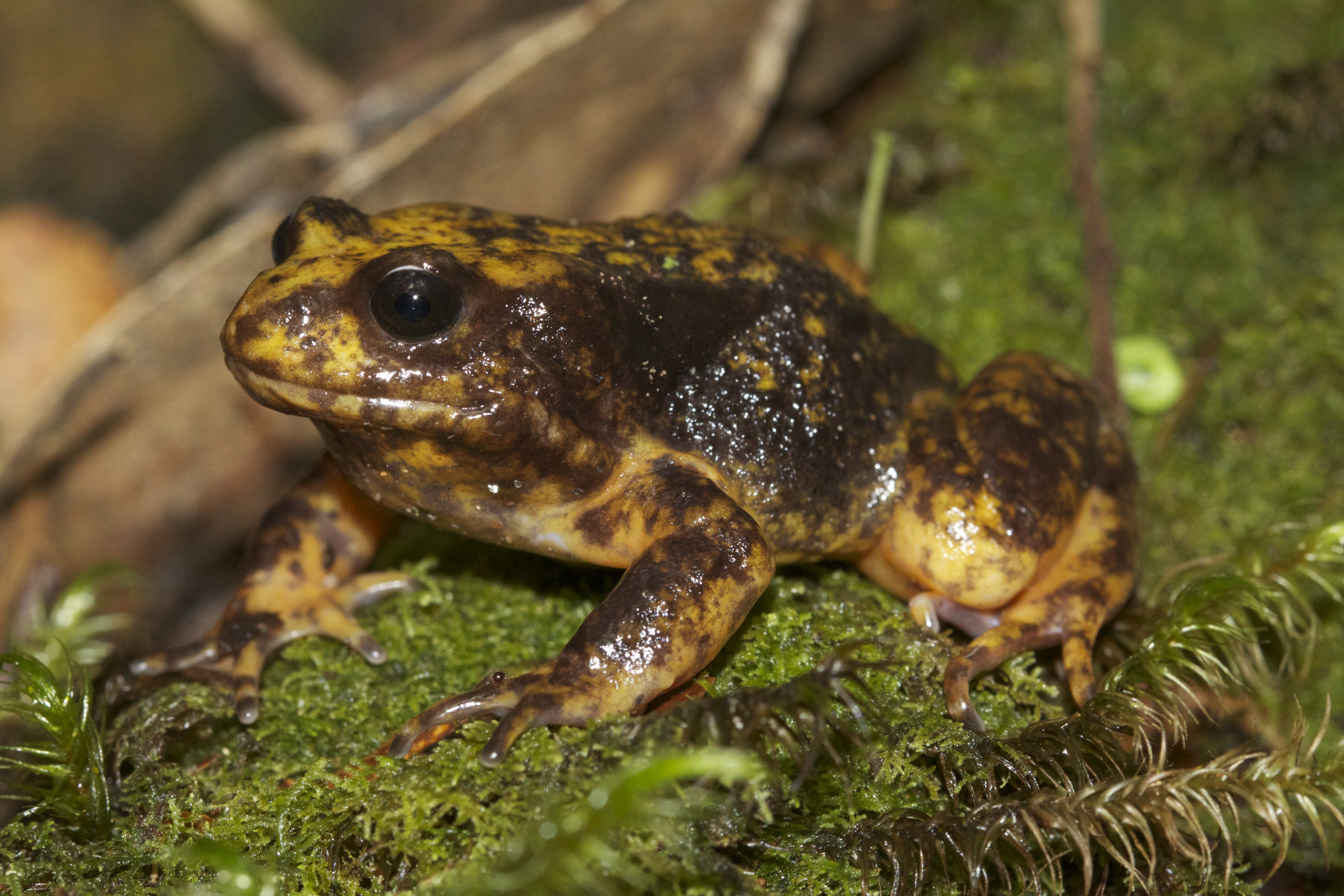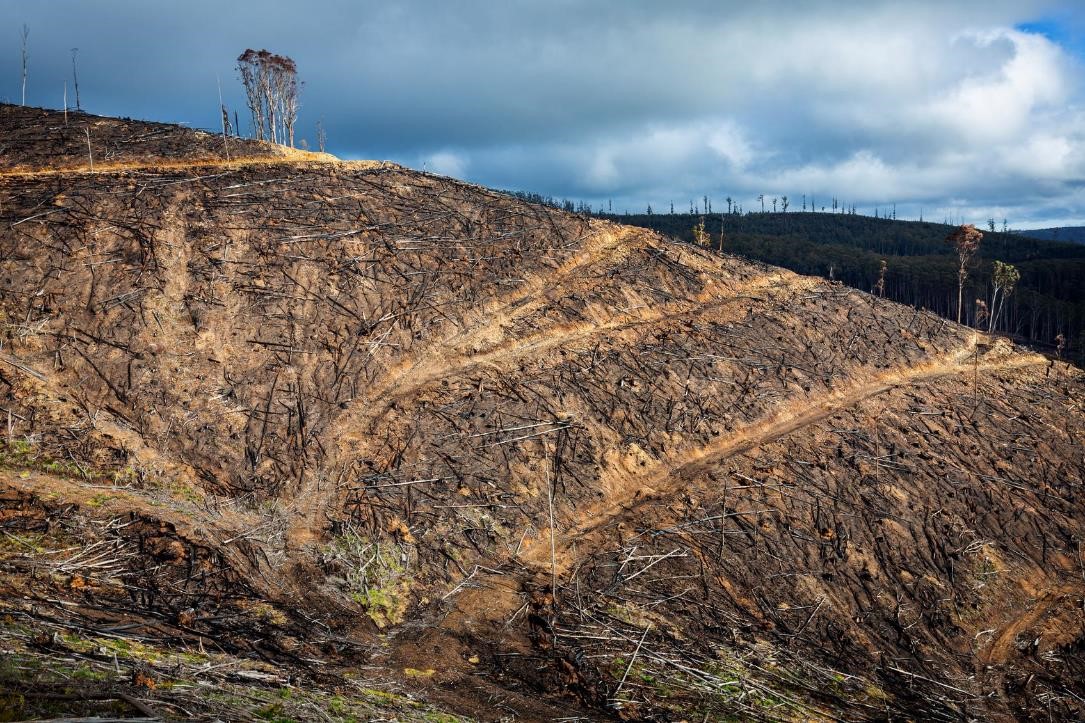New study is the first to quantify the benefits; lessons for NSW
Stills here: https://dams.wwf.org.au/resourcespace/?c=6117&k=f6d1210e86
A new research paper finds the end of native forest logging in Victoria aids 34 threatened species, including the critically endangered Leadbeater's possum and Baw Baw frog.
It's a timely lesson for the New South Wales government which faces increasing calls to shut down its native forest logging business. Forestry Corp NSW destroys trees and worsens the threatened species crisis for a hardwood division that lost nearly $90 million of taxpayers' money in the last four and a half years.
Published in PLOS ONE, the Victorian study is the first to quantify the benefits of ceasing the controversial practice in the garden state.
The research looked at the overlap between areas approved for logging in Victoria's 2021-2026 Timber Release Plan and mapped habitat of nationally listed threatened species.
It found 99% of the areas approved for logging overlapped with the habitats of threatened species.
Ending native forest logging in Victoria prevents further habitat disturbance for at least 34 nationally listed threatened species.
For five species found only in Victoria, the 2021-2026 Timber Release Plan approved logging over substantial amounts of their habitat.
The Baw Baw frog had 6.2% of its remaining habitat approved for logging. For the Leadbeater's possum it was 6.1%.
Victoria's 2021-2026 Timber Release Plan approved logging in 6.2% of the Baw Baw frog's remaining habitat ©Damian Goodall, Zoos Victoria.
A rare small scaleless freshwater fish, the barred galaxias, had 5.6% of its remaining habitat approved for logging. Rounding out the species set to be substantially impacted were two scarce plants: the Tall astelia (5.4%) and the Colquhoun grevillea (5%).
The Victorian government announced logging of state forests would end on 1 January 2024, by which time the Timber Release Plan was well underway. It was not determined how much habitat was logged in the years it was operating.
Lead author Dr Kita Ashman, a conservation scientist with the World Wide Fund for Nature-Australia, said:
"Logging has devastating impacts on biodiversity, and the science has never been clearer on the benefits of ending native forest logging.
"Our research reveals ceasing this destructive practice benefits more than 30 species.
"The final timber plan approved logging over nearly 5,000 hectares of the Baw Baw frog's last remaining habitat and more than 26,000 hectares of the last areas of forest where Leadbeater's possums are found.
"These two critically endangered species are hanging on by a thread. To log their habitat is the very definition of death by 1,000 cuts.
"New South Wales continues to degrade koala and greater glider habitat with a government-owned native forest logging business that runs at a loss and is subsidised by taxpayers. It's got to stop.
Dr Dan Harley, senior ecologist, Wildlife Conservation and Science, Healesville Sanctuary, said:
The cessation of logging is the most critical recovery action to protect the critically endangered Leadbeater's possum.
Range-restricted species, like the Leadbeater's possum, are particularly susceptible to logging impacts, especially when considered in combination with bushfire damage.
After decades of logging and major bushfires in 1939 and 2009 there are far fewer mature, hollow-bearing trees, essential for nesting and denning by numerous species such as the Leadbeater's possum and the greater glider.
With the end of logging in Victoria, the area of old forest can increase, but it will be a long process.
Professor David Lindenmayer, from the Australian National University's Fenner School of Environment & Society, said:
"Extreme pro-forestry activists repeatedly and falsely claim that native forest logging has no impacts on forest biodiversity.
"This important new paper adds to the increasing body of robust peer-reviewed science that clearly demonstrates that logging has major negative impacts on Australia's threatened species.
"This industry has cost the Australian taxpayers literally billions of dollars and undermined the nation's ecological integrity. It is time for it to end.
Dr Michelle Ward from Griffith University's School of Environment and Science said:
"Logging of native forests is not just an assault on nature—it's a betrayal of our economy and our communities.
"The true cost of destroying these irreplaceable ecosystems is far greater than any short-term profit; it erodes the foundation of biodiversity, weakens our climate resilience, and damages the long-term prosperity of our people.
"New Zealand made the bold decision to protect their native forests in 2002, and Australia must follow suit".
Clear fell logging destruction near Matlock in central Victoria © Chris Taylor
Victoria's threatened species will be impacted by previous logging for decades to come because forests are slow to recover.
The study also warns the future is uncertain for Victoria's state forests. There are plans for extensive salvage logging following windstorms (and also likely after wildfires) – a practice that has well documented negative ecological impacts.
A solution to this uncertainty would be to designate many areas of state forest as new protected areas. Forests previously logged and degraded could be restored in consultation with First Nations custodians.








